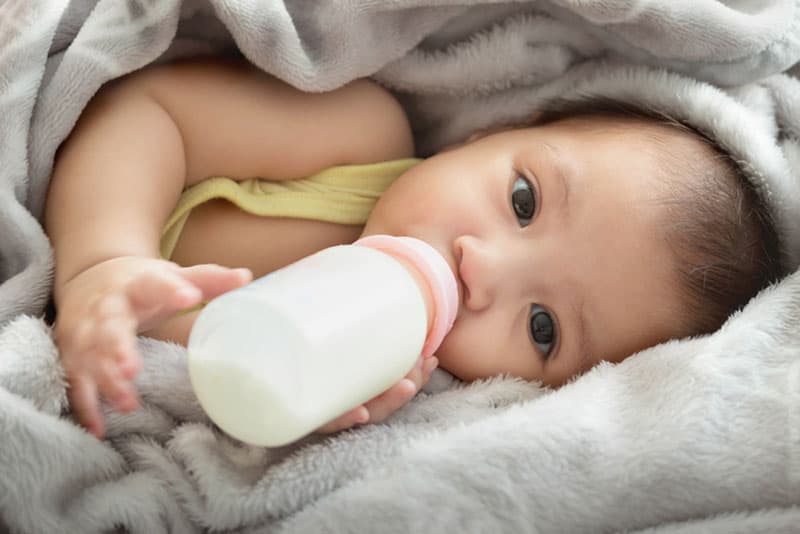There are many moms who exclusively practice breastfeeding, but even then it’s important to know how to warm a bottle up quickly for when there might be problems with milk production or you are unable to breastfeed for whatever reason.
When it comes to how to warm a bottle, there are a number of ways.
Some of the best ones include putting the bottle in a bowl of warm water, putting the breast milk storage bag under warm tap water, or using a bottle warmer.
Those of you who stick to mixing baby formula can get warm bottles of it by mixing it directly with warm tap water.
Aside from the above, there are two more methods. The first is simply using the microwave while the other relies on the stove top and putting it in boiling water.
But, these two methods aren’t recommended due to the risk of hot spots appearing in the baby’s bottle. This places the baby at risk of burning his tongue which is only going to cause more problems.
There are additional issues with these two methods, but I’ll get into that a bit later as we explore the best ways (and some that aren’t) of how to warm a bottle of breast milk.
The Importance Of Knowing How To Warm A Bottle Of Breast Milk
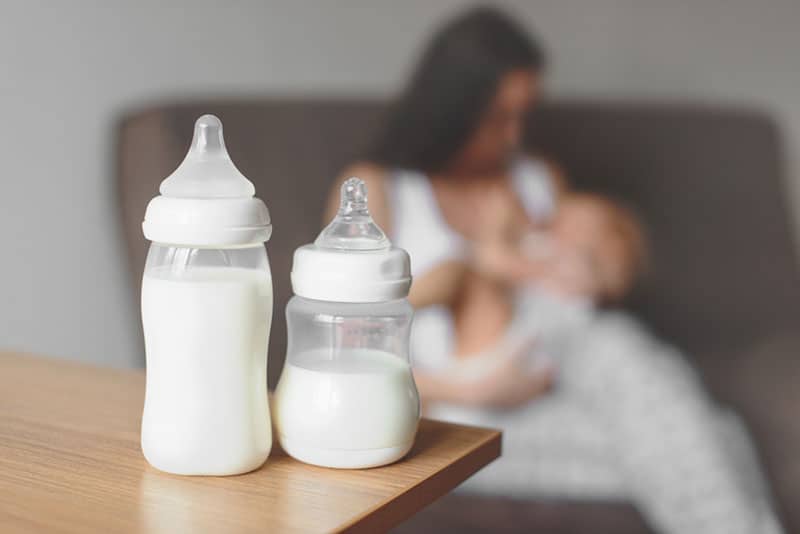
While not as crucial as knowing how to change a diaper or bathe a baby, warming bottles is still something you should know how to do.
Warming breast milk is not rocket science after all and it’ll only take a few reads of this to master it.
Plus, you can always bookmark the article as a quick reference guide should you find it necessary to look back on some procedures.
When breast milk comes out of the breast the temperature of the milk is usually somewhere around the average body temperature.
This is the perfect temperature at which breast milk is able to keep its beneficial properties.
Some babies enjoy cold milk and others enjoy straight-up room temperature over warm milk and that’s also okay!
There is no real ‘right way’ here. It’s all a matter of preference hence my earlier mention of it not really being a crucial mothering skill.
But, should your little one be a pickier eater, knowing how to get the temperature just right is something extra that’ll make your life so much easier.
And it’s not just important for you to know, your partner should learn this skill too so he can properly feed your child should you be otherwise occupied.
After all, bottle-feeding is his only way of actually feeding the baby given his lack of breast milk.
If you’re looking to hire a nanny, you should make sure she also knows how to warm a baby bottle properly before you hire her.
The Type Of Bottle That You Should Be Using
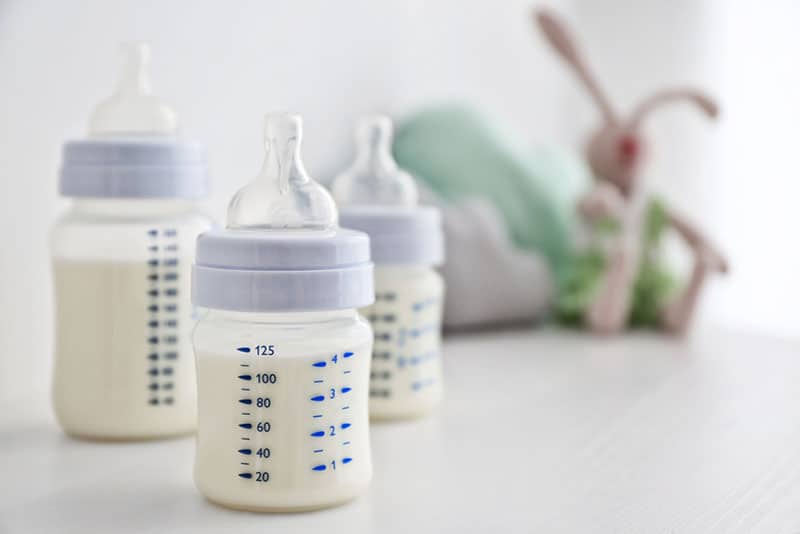
While every modern bottle is mostly safe to use when warming breast milk, there are some brands and some older, second-hand models that aren’t.
I’m referring to those that still contain BPA’s or phthalates, two very dangerous chemicals that your baby’s body can confuse for estrogen which can cause a whole number of unnecessary complications for your little one and his overall health.
So, if possible, please stick to glass bottles or BPA and phthalate-free ones which should be most bottles on the US market.
Do be careful though, if importing them, as other countries don’t adhere to the same health and safety standards as we do in the States, and always check if a bottle contains BPA before using/ordering it.
I know that some parents are skeptical of glass bottles because of their weight and the potential of breaking.
But, most bottles these days are made of tempered glass which is sturdier than the plastic ones and much nicer to look at.
So, if you’re in two minds about which type of bottle to buy, they would be my personal recommendation.
The 4 Recommended Ways Of Keeping A Bottle Heated
When raising the question of how to warm a bottle of milk, as I mentioned earlier, there are 4 good and easy ways of keeping a baby’s bottle heated.
These are: using a bottle warmer to get it to the desired temperature, placing a lukewarm or cold bottle in a bowl of warm or hot water, placing a breast milk bag under some warm tap water, or making a bottle of formula by mixing it directly with warm tap water.
1. The bottle warmer method
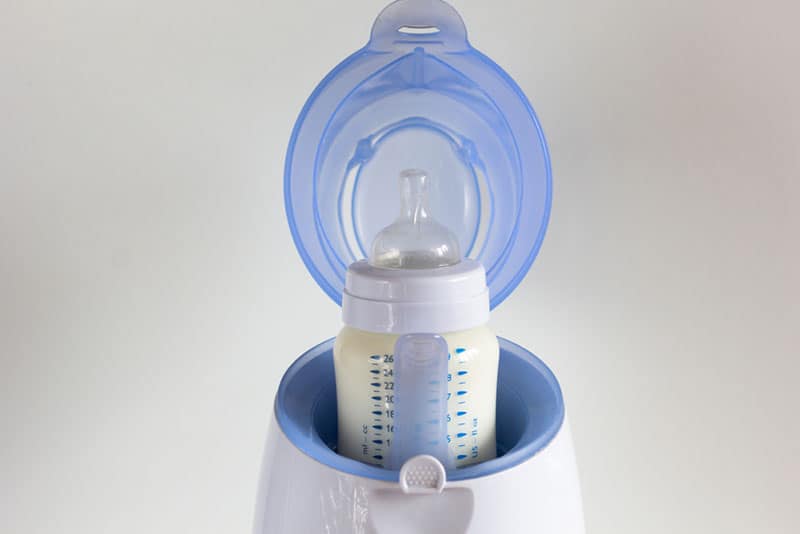
Arguably the easiest of the lot, using a bottle warmer makes heating bottles as easy as pressing a few buttons!
Adjust your settings and choose the desired temperature before turning it on and in no time you’ll have a warm bottle of human milk or baby formula ready for your child.
Do make sure to get the right bottle warmer though. As long as it fits the baby bottle that you bought, you’ll find yourself having no issues with warming milk up ever again.
The one downside is that they do take up space in your probably already stuffed diaper bag, but luckily not too much.
Besides, they can be a real lifesaver at times when you just can’t wait for alternative methods that take longer to get the job done.
Some of the more modern ones have extensions that can be plugged into your car which is great if you’re away on a trip and there is no outlet in sight!
There are others that make formula feeding a breeze by mixing the infant formula in and adding the water by itself.
2. The counter top method of heating the bottle in warm water
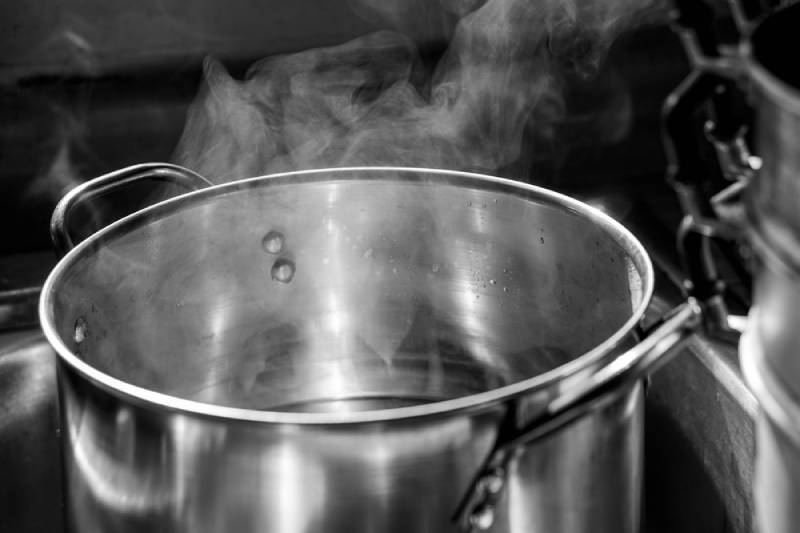
This is a rather simple but highly effective method that’s been used for ages and ages.
Heat your water up on the stovetop before pulling it off and setting it aside on the counter top.
After that, place the bottle in the bowl and let the temperature of the water distribute itself evenly into the milk or formula, and voila, warm breast milk and fresh baby food ready for consumption.
It really is just as simple as that!
3. Using warm tap water instead
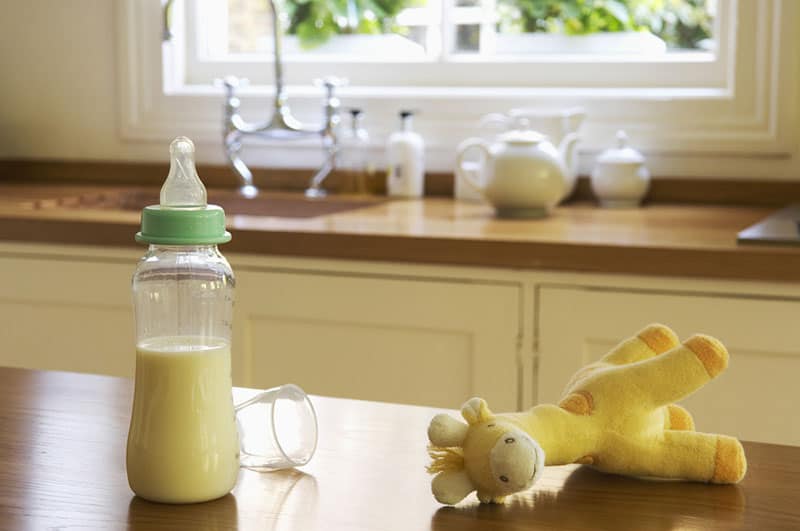
Another good method is to, as the heading says, just take the bags that you store breast milk in out of the freezer and place them under some warm water from the tap.
Wait for them to warm up before pouring the contents into a baby bottle.
It’s a simple and easy way if you don’t want to hassle yourself with turning the stove on in the middle of the night if you’re woken up for a night feeding.
This way you won’t risk leaving the stove on by accident in your half-awake state and potentially cause yourself more trouble than heating breast milk was worth.
4. Using tap water to help mix baby formula
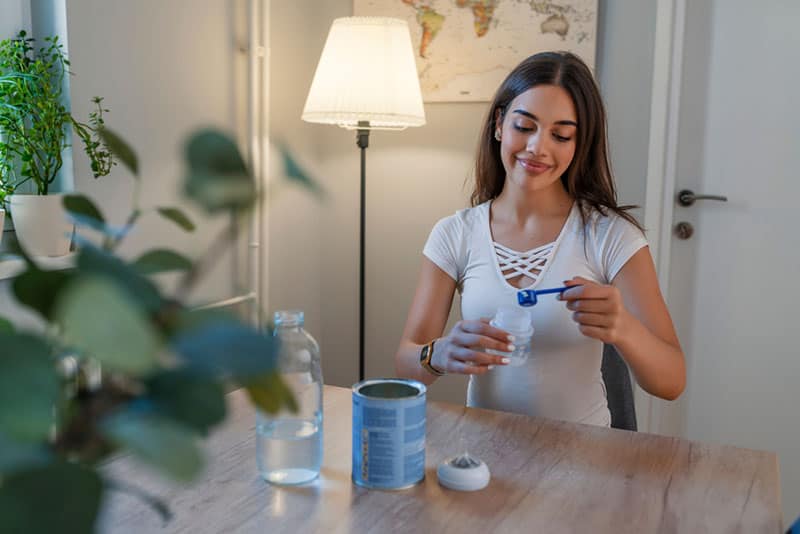
In a similar vein, you can rely on your trusty faucet to help you deal with mixing baby formula in the middle of the night or any other time of day for that matter!
By pouring warm water directly from the tap into the bottle, you don’t have to go through the whole process of heating it up as you already have the ideal temperature set.
All you have to do now is mix in the baby formula and you’re good to go.
The 2 Methods That Aren’t Recommended And Why
Alternatively, there are two other methods that can work, but they have one problem tied to them and that’s being heated unevenly or outright overheating the milk.
These two methods are heating the bottle directly on the stove top and using a microwave to heat the breast milk.
The issue with being heated unevenly is that it creates pockets of heat.
These hot spots end up scorching the baby’s mouth when he hits them which is going to leave him crying wildly and may end up causing serious harm.
The other methods are more preferred because they don’t have these risks and they require less time and effort.
The other problem is the potential of overheating the milk. The uneven distribution of heat ends up ruining the helpful enzymes inside the breast milk and many of its other beneficial properties.
This can potentially cause some problems in the baby’s development cycles and is likely to impede his growth both mentally and physically thanks to the nutrients being ‘burnt’ away.
The issue is that the heat is applied too quickly. The ideal process is to slowly heat it up to the desired temperature rather than blast it all in one go.
1. Using a microwave
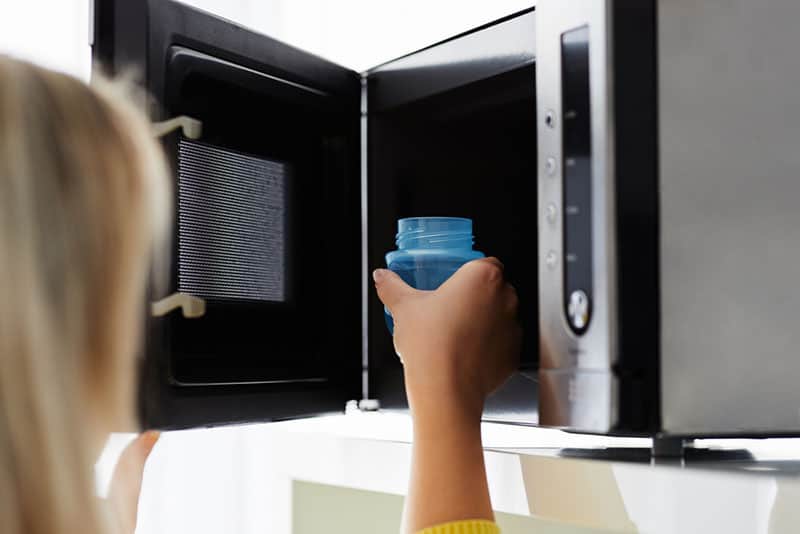
While using a microwave can seem fast and effective, it’s still overall more trouble than it’s worth.
The main problem is the uneven heat distribution due to the waves which are used to heat the bottle up.
Not to mention that, even when the microwave finishes, the milk ends up cooking for a bit, raising the temperature higher than that of the desired one, and risking mouth burns and worse.
If you can help it, don’t use the microwave and instead just rely on the other methods.
2. Using a stove top
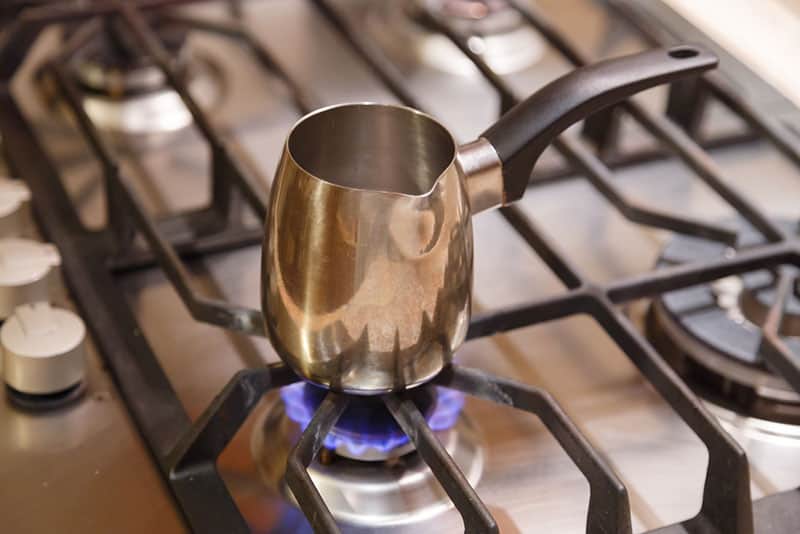
Relying on the stove as a quick way to warm a bottle of breast milk has the same problems as the microwave method, uneven heat distribution which leads to hot spots and overheating.
While hot spots are less likely to occur on a stove, they’re still very probable depending on how the temperature distributes through the milk.
The bigger concern is overheating as you’re working with an ‘open flame’ for lack of a better term rather than a controlled temperature that’s just right.
If at any point the temperature of the milk goes too high, the milk will be ruined and you’ll end up with a bad batch.
To avoid this, as already mentioned, simply heat some water on the stove top, move it off when you reach the desired temperature, turn the stove off, and use the pre-heated water.
That way there’s no further incoming heat and you’re less at risk of ruining the milk.
2 Things You Should Do Regardless Of Method
1. Stir the milk/formula
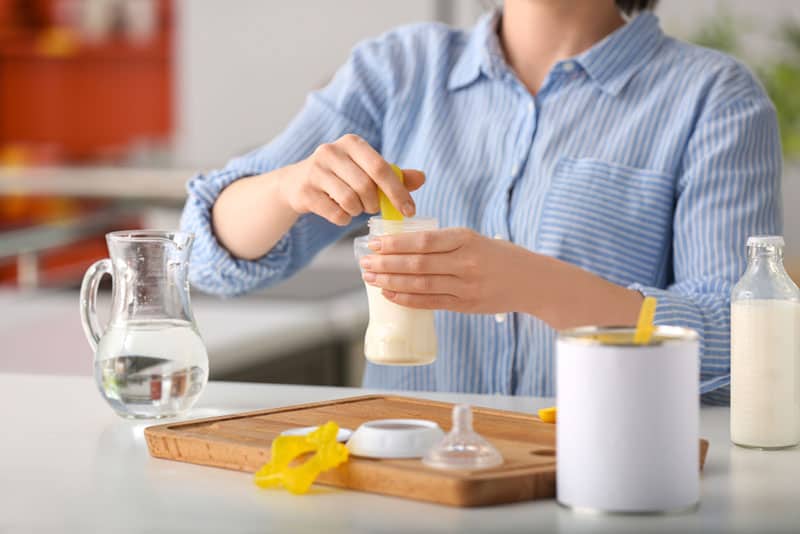
Regardless of the method, you should always make sure to stir the milk or formula (depending on what you’re using) to make sure the temperature inside evens out and that there are no hot spots.
Just because the first 4 methods are the best doesn’t mean that they’re completely foolproof.
2. Check the temperature of the bottle’s contents
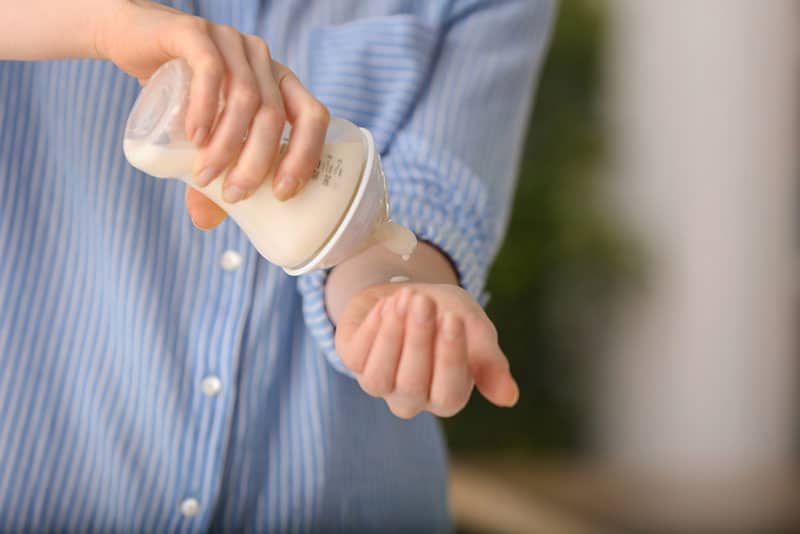
Once you’re done stirring, make sure that the temperature is still just right. Please don’t check by placing your finger in it though as that would contaminate the milk.
No, simply dab a few drops directly from the bottle on your inner wrist to see if the temperature is safe enough for your baby to consume.
If not, let it cool off a bit more and check again until you reach the desired temperature.
This way you avoid contaminating the breast milk and you don’t waste too much of it on testing the temperature.
In Conclusion
Knowing how to warm a bottle of baby formula or breast milk isn’t complicated; anyone can do it.
It’s all just a matter of using the right method and knowing what your baby likes.
Sometimes, you won’t even need to utilize it. For instance, my baby always liked cold milk so I just took the breast milk storage bags out of the freezer, defrosted them, poured the contents into a baby bottle, and fed it to him like that.
You might have a similar baby on your hands, which will save you tons of time and effort!
If not, my personal suggestion is using a bottle warmer since it saves you the hassle, it’s portable and it doesn’t waste as much water.
If you’re looking for any further advice, I suggest turning to your local IBCLC (lactation consultant) or any certified pediatric specialist for more personalized guidance.
Other than that, if you have any further questions that you’d like answered, feel free to ask. My inbox is always open. Until next time, mammas.
READ NEXT:
- Can Babies Drink Cold Milk And What Happens If They Do?
- When Your Baby Refuses The Bottle: Here’s How To Deal With It
Like this post? Please share or pin it for later. You can also stay in the loop and follow us on Facebook, Instagram or Pinterest.
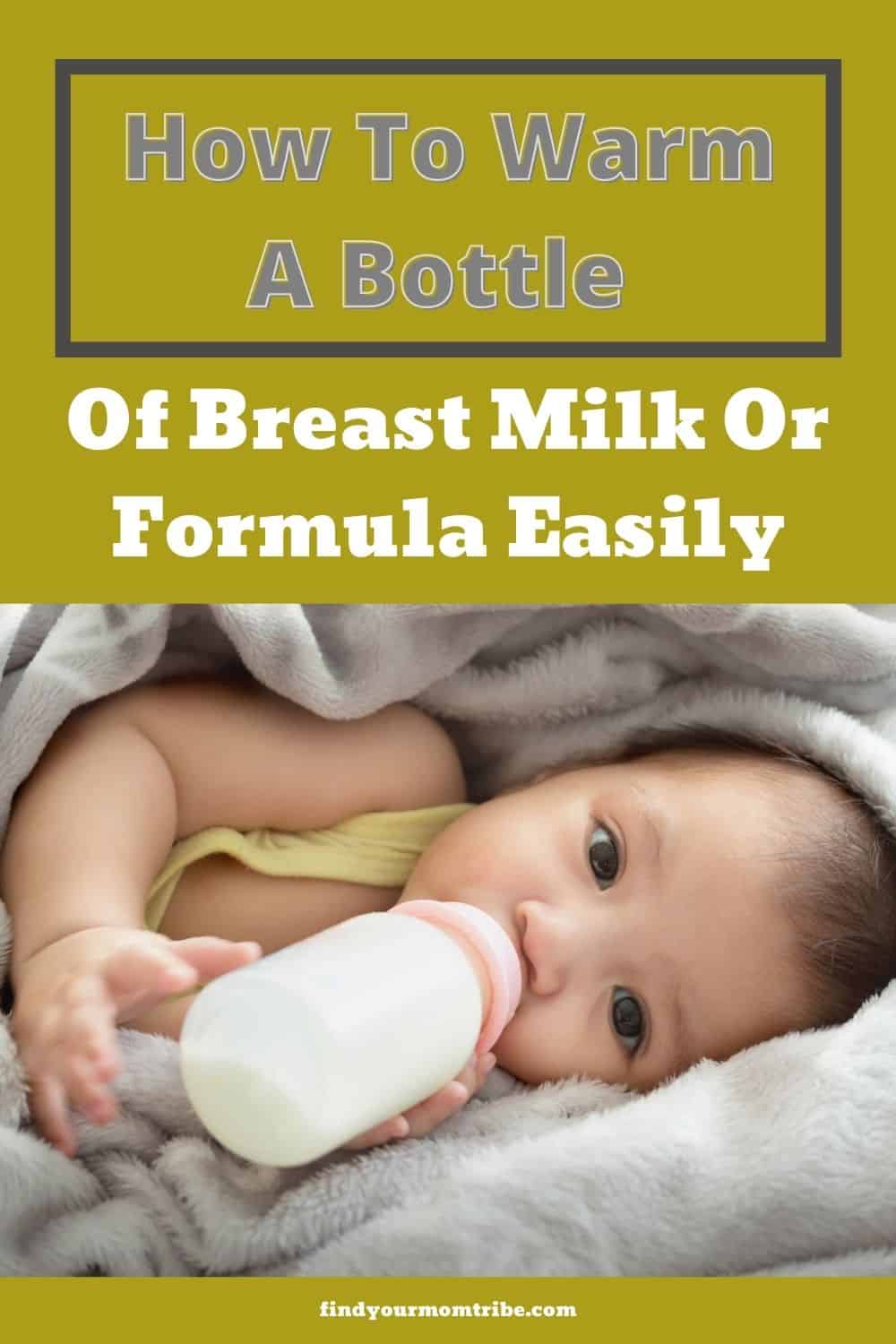
This post contains affiliate links. Please see our full disclosure for more info.

